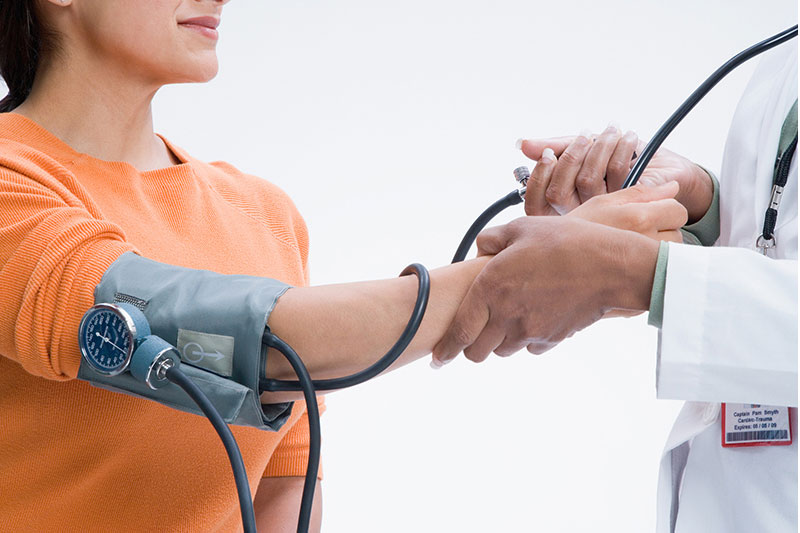Six simple ways to reduce high blood pressure

About one in three adults has high blood pressure, a reading above 140/90. Long-term high blood pressure, also called hypertension, increases the likelihood of having a heart attack or stroke. Other complications can include poor circulation, aneurysms, damage to the heart muscle, chronic kidney disease and loss of vision from damaged blood vessels in the eyes.
Most people with hypertension have no symptoms, which is why it’s known as the silent killer. And 20 percent of those with the condition don’t even know they have it. Being in the dark about your blood pressure is dangerous, says John Brush Jr., MD, Professor of Internal Medicine and Division Chief of Cardiology at EVMS, because the longer your readings are high, the greater your chance of having serious health issues.
But Dr. Brush says these simple lifestyle changes — the ones we all should practice anyway — can go a long way toward normalizing blood pressure.
Work less, walk more
Working more than 40 hours per week raises the risk of hypertension by 15 percent, according to a recent study. Not only does overtime raise stress levels, it limits your time for exercise, which is proven to lower blood pressure. Just walking 30 minutes a day can make a difference.
Salt less, veg more
Take the salt shaker off the dinner table, increase your helping of veggies, and be sure your grains are whole. When grocery shopping, check food labels for sodium content, and make an effort to eat healthy when dining out.
Weigh less, breathe more
Extra weight strains the heart, so even losing a few pounds can lower blood pressure. A few minutes of deep breathing or meditation every day will help counteract stress, which also contributes to hypertension.
Romesh Khardori, MD, Professor of Internal Medicine, also advises everyone to talk with their primary-care physician about their specific target blood pressure. "Patients must discuss this with their doctors," Dr. Khadori says, "since a target below 120 is now proven to be superior in high-risk, non-diabetic patients with hypertension, including the elderly."